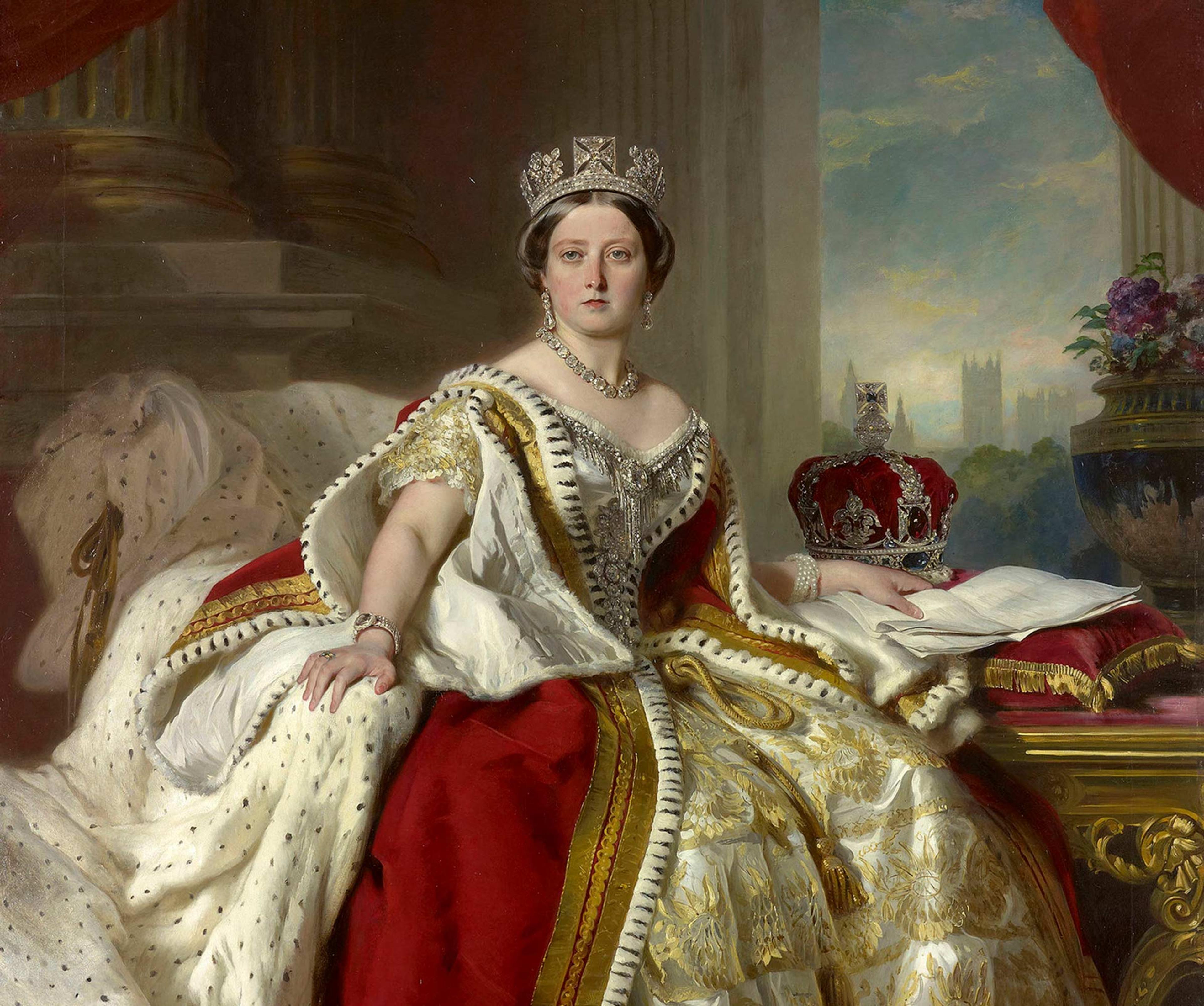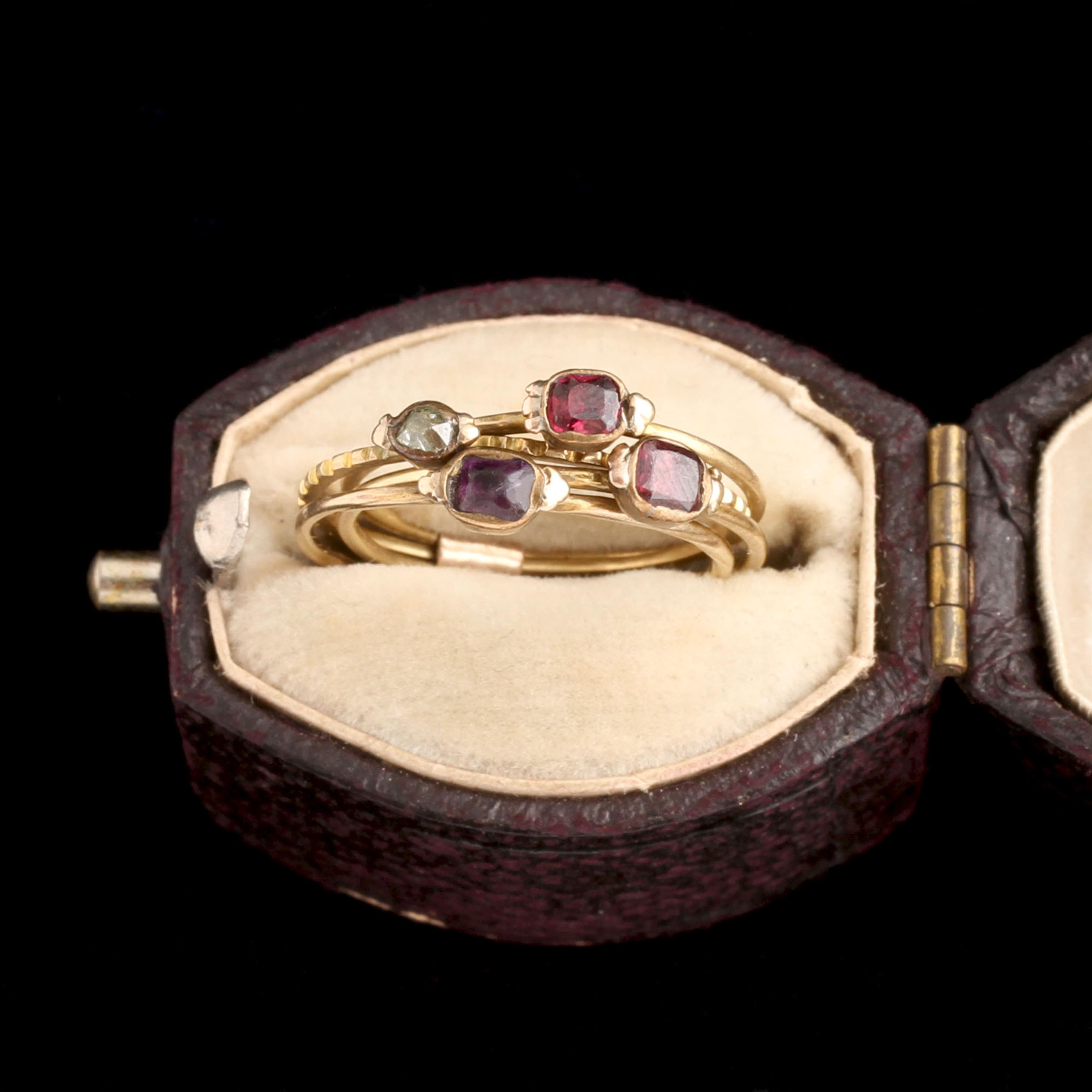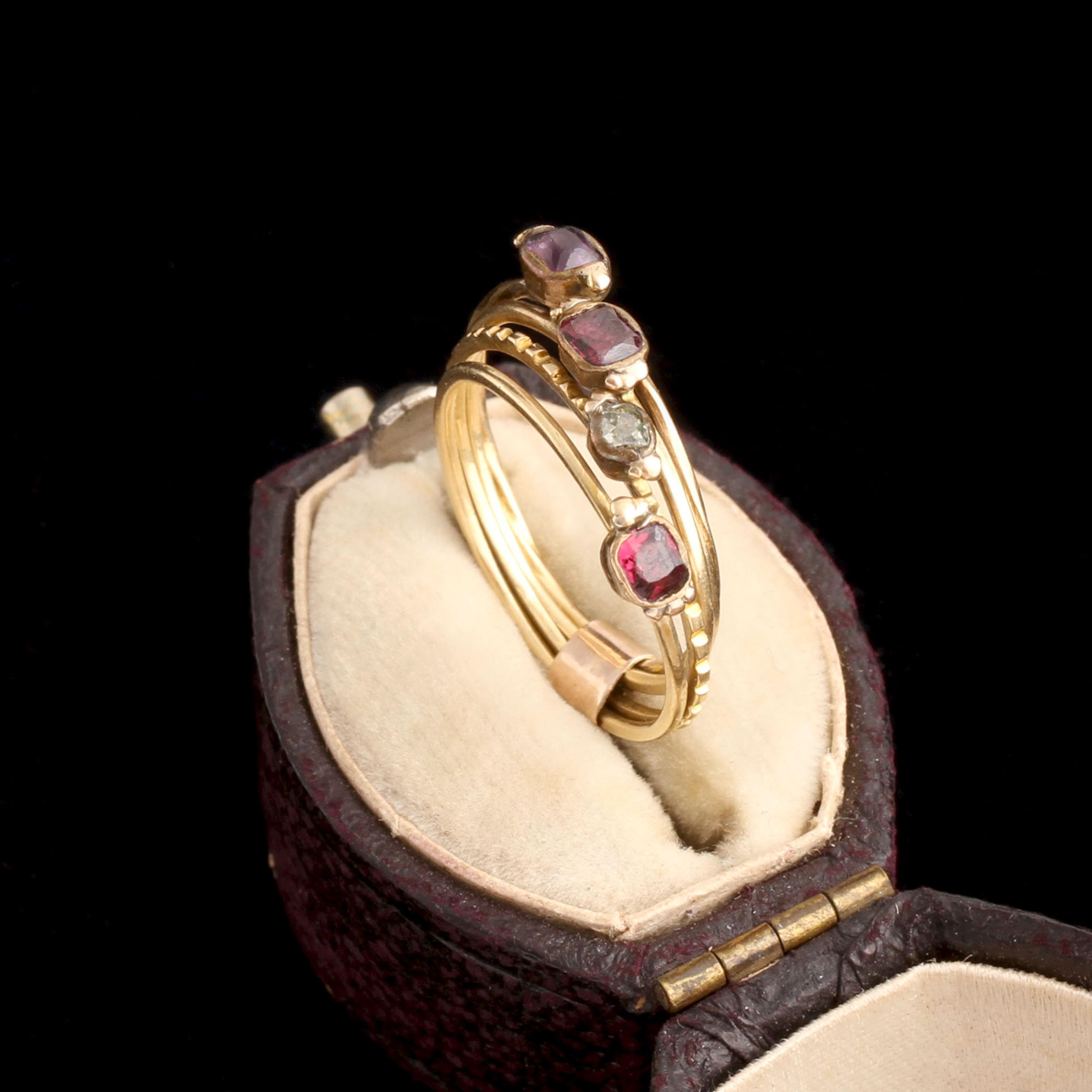THIS IS AN UNUSUAL color scheme for the Victorians, who usually chose bold contrasts over subtle harmonies. At first glance the three purplish stones seem similar, but on closer inspection, notice the nuance: a velvety amethyst, a fiery pyrope garnet, and a deep almandine garnet. Oh, and a rose cut diamond for good measure - the Victorians' favorite for catching candlelight. This type of 19th century stacked ring is commonly referred to as a "harem" ring - a name derived from its *loose* interpretation of the of the Turkish wedding / puzzle ring. The only puzzling part is how the Victorians translated Ottoman culture - which they were obsessed with - into THIS. It's not a true representation of anything Turkish, but rather a Victorian fantasy that might have made a 19th century French/English woman feel a tad more exotic.
thedetails
- Materials
10k gold (tests), 2.8 x 2.3mm amethyst, 2.8 x 2.3mm pyrope garnet, 3.5 x 2.8mm almandine garnet, 2.5 x 2.2mm rose cut diamond
- Age
c. 1880
- Condition
Very good - minor surface wear commensurate with age and use
- Size
5.25, cannot be resized; 8.2mm head, 3.8mm shank
Need more photos?
Send us an email to request photos of this piece on a model.

Aboutthe
VictorianEra
1837 — 1901
The Victorians were avid consumers and novelty-seekers, especially when it came to fashion, and numerous fads came and went throughout the 19th century. In jewelry, whatever fashion choices Queen V. made reverberated throughout the kingdom. The Romantic period reflected the queen’s legendary love for her husband, Albert.
Jewelry from this period featured joyful designs like flowers, hearts, and birds, all which often had symbolic meaning. The queen’s betrothal ring was made in the shape of a snake, which stood for love, fidelity, and eternity. The exuberant tone shifted after Prince Albert passed away in 1861, marking the beginning of the Grand Period. Black jewelry became de rigeur as the Queen and her subjects entered “mourning,” which at the time represented not just an emotional state, as we conceive of it today, but a specific manner of conduct and dress. She wore the color black for the remainder of her life, and we see lots of black onyx, enamel, jet, and gutta percha in the jewelry from this time. Finally, during the late Victorian period, which transitioned along with a rapidly changing world into the “Aesthetic Movement”, there was a return to organic and whimsical motifs: serpents, crescent moons, animals, and Japonaisserie designed for the more liberated “Gibson Girl”. During the second half of the 19th century, America entered the global jewelry market, with Tiffany and Co. leading the way. Lapidaries continued to perfect their techniques, and the old European cut emerged toward the end of the Victorian period. The discovery of rich diamond mines in South Africa made the colorless stones more accessible than ever before.
please note:Terms of Sale
Antiques can be returned unworn and in original condition within 10 days of delivery for an exchange or refund minus the cost of shipping. Once a piece has been altered, including ring re-sizing, it is FINAL SALE.





